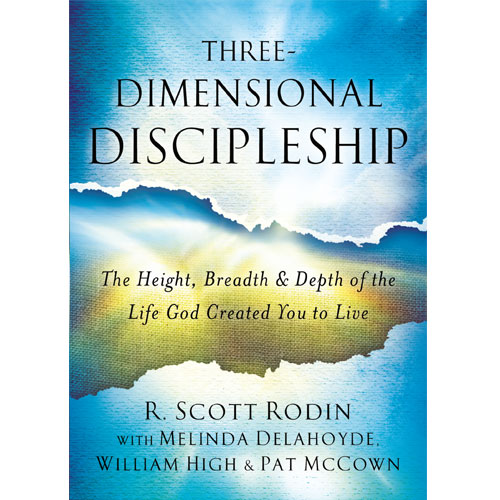The Steward Leader as Pattern Maker
Originally published on the Christian Leadership Alliance blog, October 28, 2015

Steward leaders must understand the significant impact they have on their organizational culture. To help us think about that impact consider the concept of fractals. Fractals are complex structures that originate in simplicity. One example is a fern, which appears to be a complex structure of countless shapes and patterns that are woven together to form its intricate and beautiful leaves. Yet the entire structure can be simplified to a basic four-line pattern that is simply repeated in various directions and sizes. It is amazing to see how many highly complex structures in our natural world can be simplified in a similar way to a basic fractal pattern. Margaret Wheatley uses fractals to help us understand organizational culture.
All fractal patterns are created as individuals exercised both freedom and responsibility to effuse simple rules. Complex structures emerge over time from simple elements and rules, and autonomous interactions. (1)
Just as the most complex physical structures are composed of simple fractals that are repeated within the confines of a basic set of rules, the same is true for organizations. The point for us is the impact that the values of a leader have on the development of the culture in their organization. Culture is formed from repeated patterns of behavior. The leader serves his or her organization like a fractal. They set the pattern through their own values and behaviors, and the extent to which they bring consistent alignment of the organizational vision with every aspect of the organization’s work. As these patterns are set, and as people are allowed the freedom to repeat and build and expand upon them, culture is born.
This same freedom keeps the steward leader from playing the owner. There is real freedom here for an organization to develop its culture freely. That is, although the fractal pattern is set, the way that pattern is expanded, duplicated, built upon and arranged within the organization is the result of free people interacting in community.
Fractal order originates when a simple formula is fed back on itself in a complex network. And in true fractal fashion, these vital agreements do not restrict individuals from embodying them in diverse and unique ways. (2)
Steward leaders develop and nurture culture not by controlling information or manipulating perspective, but by modeling the heart of the steward leader and being free to allow it to be repeated throughout the organization.
The potent force that shapes behavior in these organizations and in all natural systems is the combination of simply expressed expectations of purpose, intent and values, and the freedom for responsible individuals to make sense of these in their own way. (3)
Such an aim requires a leader to be free in their relationship to their job, their people and the vision of the organization to allow people to act freely as they develop culture.
If leaders serve like fractals to give shape and pattern to the cultures of their organizations, they must also understand that those cultures transcend their leadership. We inherit culture wherever we go and we leave it behind when we leave. If we are free in relationship to our organization and the culture we help shape, then we must be able to walk away and allow the culture to change and reform under new leadership. Too many leaders cannot let go because, in part, they believe that the culture they have helped develop could not exist without them. This is nothing more than ownership and bondage dressed up in the guise of ‘caring about my organization after I leave.’ While culture may be shaped by the leader, it is maintained, nurtured, developed, adjusted, amended and reformed by the community. In all of these ways culture transcends any one particular leader, and we need to be free from it in order to let that happen when it must. If we do not own the culture, we can allow it to be passed on to the next person God calls to lead. And when we look back and see that the culture we helped shape has changed under different leadership – a new fractal pattern – we can rejoice in what God is doing.
Steward leaders who are truly free will neither under-estimate the impact their own behaviors and values have on shaping culture, nor will they overestimate their own importance to its preservation and development after they leave. This is an important balance to maintain if we are to be stewards of our organizations.
- Do you understand and appreciate the role you play in shaping and maintaining the culture of your organization?
- What kind of fractal pattern are you modeling, and how is it being repeated throughout your community?
- Is your community free to shape its culture according to the way God is leading it?
- Where are you giving in to the temptation to play the owner-leader? Where do you need to ask the forgiveness of your people?
This blog is adapted from The Steward Leader, R. Scott Rodin, InterVarsity Press, 2010.
1 Margaret Wheatley, Leadership and the New Science. (Berrett-Koehler, 2006), p. 127.
2 Wheatley, Leadership and the New Science, p. 128
3 Wheatley, Leadership and the New Science, p. 129, (italics mine)




